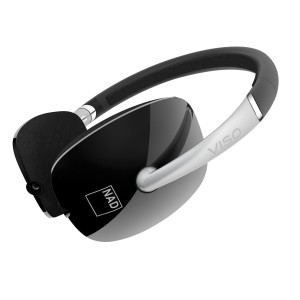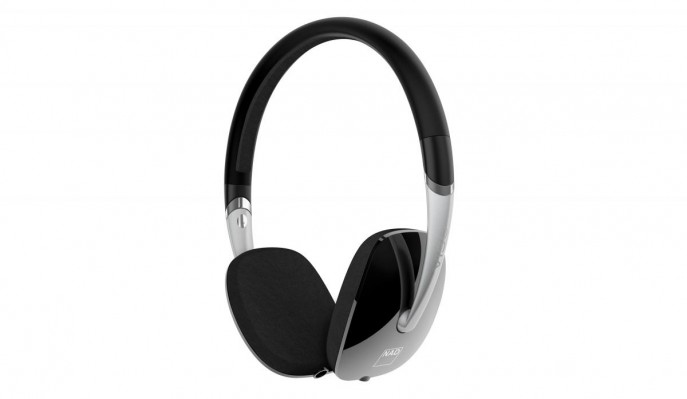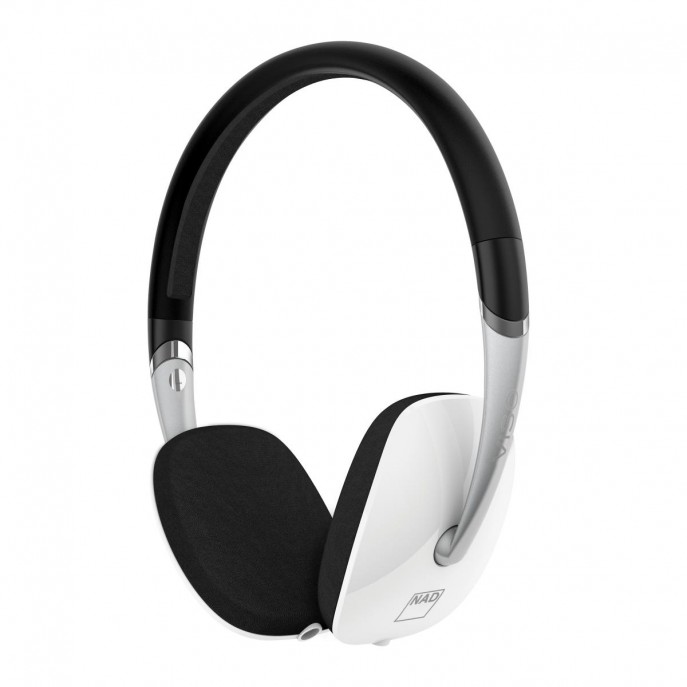NAD Electronics is one of the recognized brands in the field of high-end audio. Having been founded in 1972, it’s been in Hi-Fi for a longer time than many of its competitors and has thus, acquired a lot of experience and followers. NAD’s marketing has stayed fairly consistent throughout history being a lifestyle product company focused on audio
The company was integral to the image of the iconic American living room. Growing up, I fondly remember the Hi-fi stereo sets and amps that my neighbors and friends would own. It’s these moments later in my life that I recall the stained-wood rectangular pairs flanked by these metal contraptions with weird cylinders sticking out of them. I would safely say that most people can claim to have a similar nostalgia to these sights. The important thing then, isn’t our individual remembrance of days past, but rather the shared longing for those ‘simpler’ times of America and our younger years. This collective yearning makes NAD Electronic’s contributions substantial to creating the image of the American living room thanks to the prominent use of their technologies.
The $299 NAD VISO HP30 is one of the newest additions to the company’s extensive selection of home theater and portable audio products. It is an elegantly designed on-ear headphone featuring NAD’s RoomFeel technology as one of its highlights. The headphone also comes equipped with the traditional extras you would expect of a portable headphone such as a microphone and control unit. The standout addition to the features list however, are the removable cables. NAD provides you a cable with and without the mic and control unit. You just pick the one you want from the box and plug it into the headphone through a set of standard 2.5mm plugs at the base of the unit.

My first impressions of it were that the retail box and packaging are first-rate. The retail box has a sturdy design that uses plenty of thick outer material to give it a hefty impression upon holding it. But what I noticed even before that was the graphic design; it was perhaps the best I’ve seen yet. The design uses a bold color tone featuring red, black and gray as the main focus. Each piece of image, text, and placement of objects uses these colors to not only blend in but also to pop out at the viewer. The box gives you all the information you need to know about the headphone while maintaining proper distance and separation from each other to make certain elements stand out. This is a testament to how much attention NAD put forth in presenting their products.
BUILD AND USE:
“We Don’t Care About Your Lifestyle. We Care About Your Ears” is embellished onto the side of the box as a statement of NAD’s goal. And guess what, that’s immediately the first thing I noticed when I pulled the headphones out of the box. The headphone itself is very striking in initial appearance and doesn’t quite like anything else you’ve seen worn frequently on the streets.
The vivid looks also manifest themselves into a good build. The headphone spared no expense on quality materials in its entry into the $299 portable headphone tier. The HP30 is laced with quality parts throughout including a manganese steel extender rod, soft cloth ridge on the headband and ear pads, and polycarbonate/ABS plastic on the driver housing. Personally, I believe the highlight of the headphone is the headband assembly. The look and feel of it really puts the HP30 into a different class of its own. NAD launched quite an attack on the other headphones in this tier!
NAD designed the VISO HP30 with user choice and access in mind. Both the cables and the earpads can be easily removed from the unit! NAD not only made it just one step to remove these items but also used standardized and non-proprietary mechanisms in doing so. This allows for the owner to upgrade the cable in the future or fix the earpads with near universal support as it doesn’t rely on anything special.
The two detachable cables that NAD provided are 2.5mm terminated on the side connected to the headphone and 3.5mm towards the music player. Both cables are 1.2m long and are of the same flat design. The only difference is that one includes an in-line microphone/volume-control unit. They do their job well and don’t have any glaring issues. Best of all, true to the claims, the cables rarely tangle. NAD also included a 3.5mm-to-1/4inch adapter but you will probably never have use for it given the portability styled nature of the unit.

The ear pads are removable through smart design from NAD. The entire cloth pad is held to the driver housing by magnets. I believe they are using a rare-earth-magnet like neodymium to latch onto another opposing magnet inside the driver housing. Either way, it is quite ingenious and works wonderfully.
Perfection may exist on paper, but nothing ever really works out as you planned. NAD is no exception to this rule. The HP30, although immense in its features, build, and design, has an Achilles heel. For me, the physical act of wearing the headphones is the limiting factor towards my enjoyment of them. The HP30 exhibits an above average amount of clamp force on the sides of the head. While wearing the headphone, you always retain the sensation of them on your head and pushing at you. You simply never forget you are physically wearing the headphone. The headphones start to get uncomfortable after about 45 minutes of wearing them. I tried different adjustments of the band to produce more slack, but it never rectified the problem.
While NAD’s HP30s have stumbled, it is in good company. They are joined by Bowers & Wilkins with the P series headphones being others that have also ‘tripped’. The similarities of the two are that we have deluxe portable headphones using some great materials and sporting an amazing look combined with features that people want. The alikeness extends to both being fairly heavy for portable sets due to the materials used and in return, we get some clamping out of it.

A sum up of the build and usability would be that I believe the HP30 positions itself well amongst its peers. There aren’t many large audio companies that make portable headphones with solid materials and artistic design philosophy at this price range. NAD has done well to give the HP30 plenty of features while maintaining an eye-catching design.
SOUND QUALITY:
NAD describes the sound of the headphone as “clean, crisp…to translate the warm, open sound of live performance into your private headphone”. This is further compounded by the inclusion of RoomFeel technology which NAD says will create a more open sound to reproduce live performances.
In testing the NAD VISO HP30, I used them with the FiiO X7 DAP primarily. Other devices I used include a One Plus One smartphone and standard computer audio-out to check it’s support for consumer devices. The headphone is efficient enough that any normal smartphone or media player will work well. I would not recommend going out and buying a dedicated amp/DAC solely for this headphone, but they do benefit from them.
The VISO HP30’s are marked by a strong accent and deep timbre. The sound signature can best be described as fun with a warm tonality with tendencies towards the mid and lower frequencies. The general tone takes on a dark background. The HP30s strike a good balance between sounding ‘fun’ and being clean towards its audio recreation.
One of the tracks that gave me a good representation of the performance was “Grande Amore” by Il Volo. The tune was one of the top performances at the 2015 Eurovision song contest. The song itself had a thick under beat from the percussion, while the vocals keep up with the ante of the rising drums before elements of ambiance and overwhelming vocal ability launch the song into hyperspace. The HP30 produced the notes well and didn’t have overly muddying effects past the chunky tonality. The well-rooted rumble that the headphones produced were exceptionally combined with the deep timbre of the vocals.
The mid-range, while lacking in sharpness, has a superior ability to settle the music for the listeners. The headphone just simply does not offend! Spiky peaks, sibilance, and bright highs were simply a problem of the past with the HP30 in my arsenal. One of my favorite parts when listening to the HP30 was that I could essentially put on any artist and just go at it. This quality allowed me to appreciate “Beat it” by Michael Jackson better than I have in the past. When listening to this song with my more analytical headphones, Michael’s ability to let out his voice in bouts of howling and emotion dug claws into my ears with how sharp it would often be. For me, the HP30’s reproduction of this song was a considerable achievement. Michael’s voice was lifelike and had vibrancy to it while packing a firm beat. The vocally impressive tangents that Michael would go off on in the song were now also listenable without having to turn down the volume. This lack of sonic fatigue is a greatly under appreciated trait that more headphones should have. In the case of the VISO HP30, it is one of the things it handles best.
Pushing tremendous strength through voice alone to the listener is challenging, but the HP30 is up to the challenge. To hear just how far the headphones could go in its ferocious ability to rock my soul, I loaded up “Rolling in the Deep” by Adele from her album 21. The HP30’s take on this song had, like I expected, a deeper vocal inflection and a particularly strong emphasis on that sweet lower-mid range that Adele is famous for being able to push out. The moment you could hear this best was during the pivotal rise into the chorus as she starts using her diaphragm. It wasn’t just the sweet and tender voice that I was hearing on the HP30 but also that down-reaching tones that Adele was letting out at the same time. The headphones truly do shine during these moments.
Spatial reproduction and separation on the HP30’s was done tastefully without going overboard. To test NAD’s RoomFeel technology on reproducing live performances, I loaded up one of the best versions I had of “Hotel California” by The Eagles. One of the most immediate differences I could tell was the tender crafting of ‘distance’ in the headphones. The sound had a virtual travelling to it akin to if you were sitting a bit farther back from the sound source than if you were directly right there. This effect was largely soothing when combined with the soft back-tones of the drums in the song during key-points of action. The other times I got a feel for RoomFeel were during the chorus of the song when the band’s vocalists all joined together in harmony. Instead of just hearing a mesh of voices, I was met with a group that was singing to me on stage. The spatial distance and separation effect on the HP30’s isn’t notably strong and can be missed at first. But a few careful listens and I’m sure you can spot a few new elements.
I don’t fully agree with the sonic descriptions that NAD claims of the HP30. I believe it has strengths that lay elsewhere as it finds a voice of its own. The HP30s have tremendous ability to push vocal range while also pulling a few tricks with spatial distance all in a portable package.All in all, the HP30’s have a knack for tone and deep timbre. I especially liked its attention to the details often overlooked in a song and its ability to jive and meld with just about any song and artist. It wasn’t as clear and detailed in places as I would have liked in a headphone, but its strengths played well into overshadowing its weaknesses.
CONCLUSION:
Ultimately, I find the VISO HP30 best fitting a ‘To-Go’ headphone. It doesn’t have the full sonic capabilities that purely audiophile geared headphones have, but it makes up for it with its crafty design and features. The headphones brought vivid life into my daily commute without requiring special care or attention to them. They have a great appearance and can fold up to be more compact. The tight clamp wasn’t favorable for me but I found myself adapting the more I used them.If you are looking for a portable headphone with lots of options, then I would recommend giving the $229 NAD VISO HP30s a look.















Want to join discussion?
Feel free to contribute!